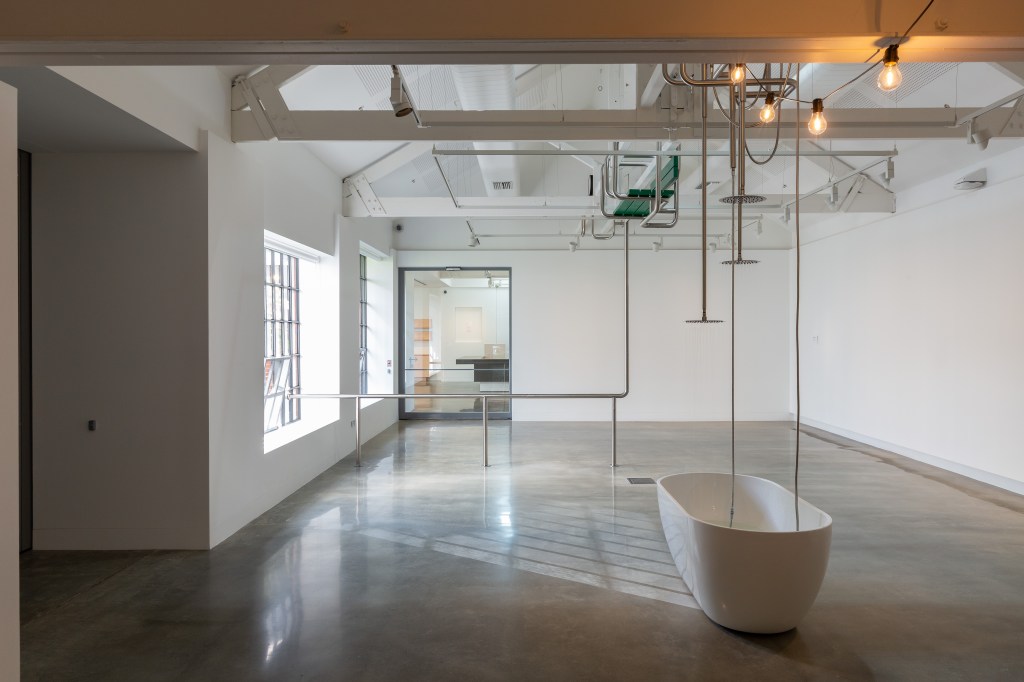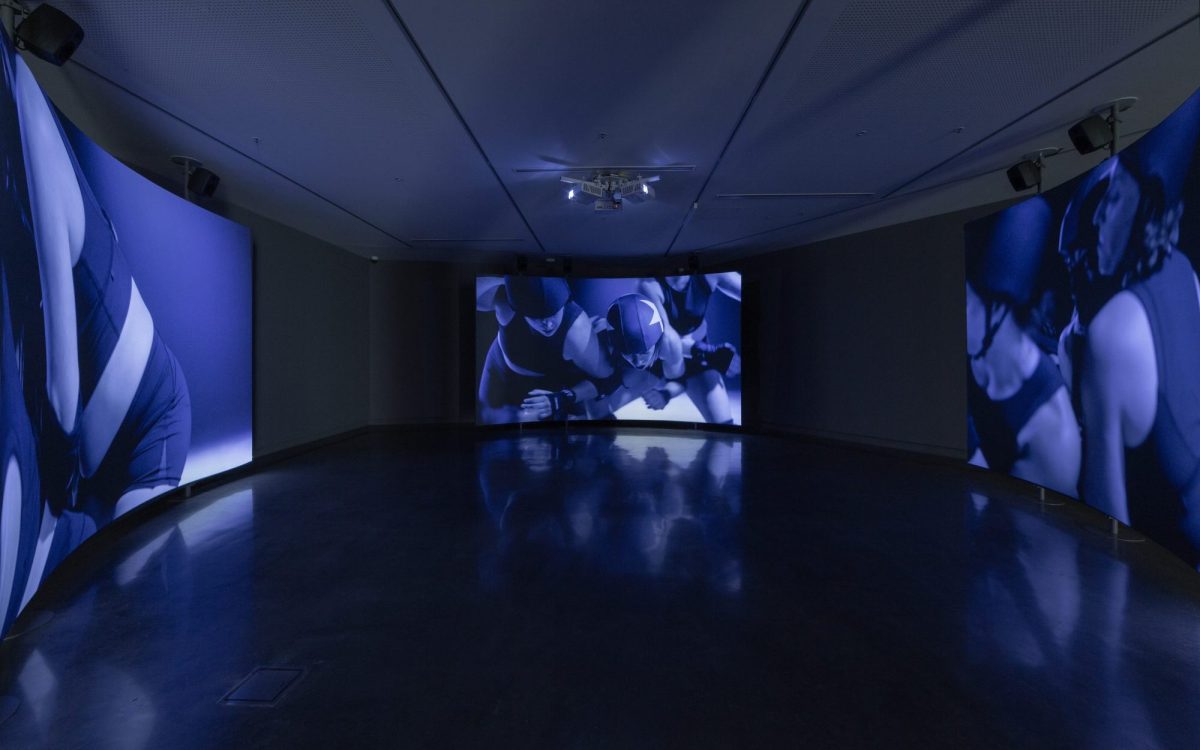There are several conceptual parallels that can be drawn between Nightshifts, which showed at Buxton Contemporary around this time last year, and its most recent exhibition, The same crowd never gathers twice. Both engage with spatial awareness – the physical and psychological – and reconstruct dynamics of the collective versus the solitary.
There is also this “cool” aesthetic that is imbued in both, from Lisa Sammut’s nocturnal environment in Nightshifts to Cate Consandine’s ultramarine three-channel video now showing, beckoning visitors on level one.
Perhaps what is most prominent is that both exhibitions interrogate the politics of “the public” – an almost contradictory proposition in the quiet, secluded ambience of Buxton itself. And yet, the presence of the phantom crowd is keenly felt in The same crowd never gathers twice, just as curator Annika Aitken highlights how the exhibition has turned out to be a highly sensory experience.
Sound is a key element throughout, and some have harnessed it in Buxton better than others.
It’s a relatively new element in the installation of Auckland and Seoul-based artist, Yona Lee, but animates her stainless steel sculptural interventions to humorous effect. Upper-floor composition (2024) elegantly straddles ceiling beams and divides straightforward pathways – no easy feat within the constraints of heritage architecture. As water trickles from shower heads into a free-standing bathtub, viewers are momentarily disorientated, before being resituated in the multifaceted vocabulary of Lee’s practice.

University of Melbourne, 2024. Featuring Yona Lee, ‘Upper-floor composition’, 2024. Image: Courtesy of the artist and Fine Arts, Sydney. Photo: Christian Capurro.
Lee’s installation further extends outwards into Buxton’s courtyard, hugging the base of a tree in a playful embrace.
Laresa Kosloff’s silent Super 8 film videos and Taryn Simon’s sound installation, Assembled Audience (2018) share the main gallery, and here they clash. Simon’s layered recordings of audience members applauding at various public events seem to accompany Kosloff’s documentation of mundane everyday encounters at first, but becomes increasingly overwhelming and results in the loss of subtlety of the latter.
Sound can make or break a space, and needs a controlled balance when positioned with other works or it can easily dominate.
Perhaps it is for this very reason that Consandine’s RINGER (2024) is the only work in view when arriving on the upper level. Not only does the piece fully utilise its acoustic feature tailored by Australian film composer, François Tétaz, the three-channel video also casts the entire space in its glow. In this case, the immersion is welcomed, with Consandine’s highly skilled players from the Victorian Roller Derby League staging a sublime and dramatic theatrical performance.
Consandine is interested in this physicality, of bodies – women’s bodies traditionally associated with softness and vulnerability – in combat, accelerating and colliding with the intention of “hurting” the other. The 13-minute loop is worth watching from beginning to end, regardless of where one starts.
Left of the staircase is Riana Head-Toussaint’s Animate Loading 1 (2022), which looks at movement from a disability perspective. The video is repeated, once with audio description and once without.
The five installations wrap up the exhibition, with Head-Toussaint commissioned to create a new choreographic work, Guided Wrestling, in July through interacting with Buxton’s space.
The University of Melbourne has also acquired Body Loss by Angela Goh, and is the first institution nationally to bring a dance work into its collection – a decision encouraged by the Precarious Movements research project. Goh will be performing as part of The same crowd never gathers twice on 21 May at Buxton Contemporary.
Read: Exhibition review: JXSH MVIR: Forever I Live, Koorie Heritage Trust
Like the title suggests, The same crowd never gathers twice would be most interesting when viewed with other people – for the works to act as catalysts and opportunities to observe audience reaction. If a child encountered Lee’s installation, would they walk under it, circle around or even hook on as if it were a monkey bar? If they heard Simon’s recordings of thunderous applause, would they start clapping themselves? It is then that these works would become activated to heighten the meaning of the exhibition’s title and thematic.
The same crowd never gathers twice is on view at Buxton Contemporary until 13 October; free.
This reviewer visited the media preview on 7 May.





